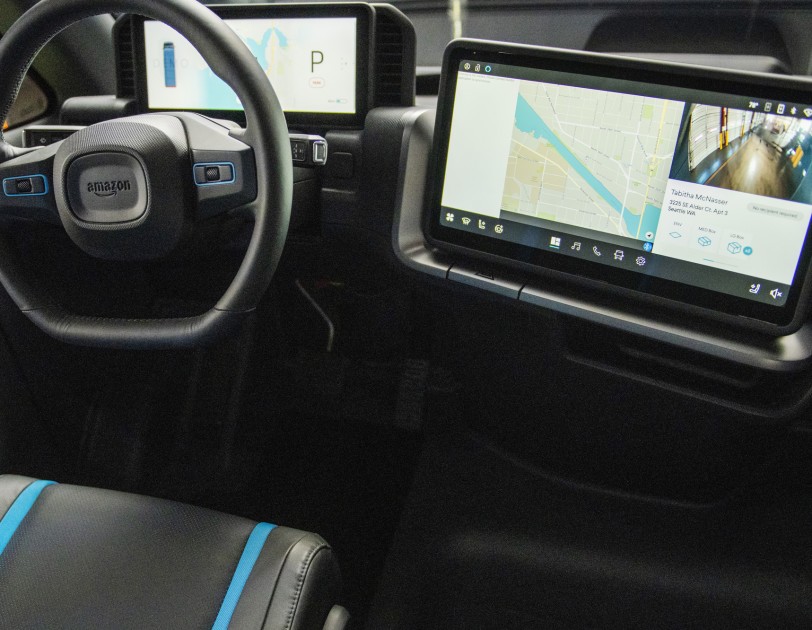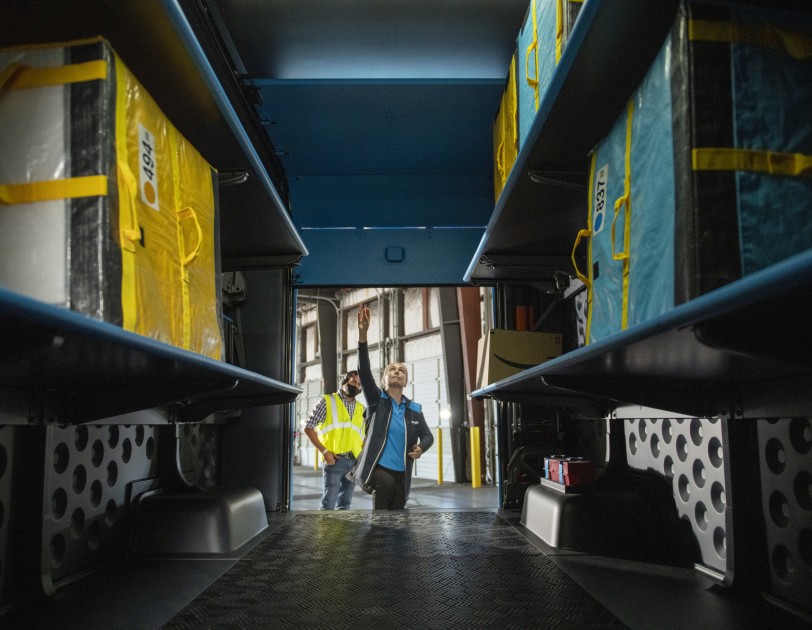Amazon has unveiled its first-ever electric delivery vehicle developed in partnership with Michigan-based all-electric truck startup Rivian.
Just over 12 months after the online shopping giant first announced its plan to invest in electric trucks as part of its ambitious goal to be carbon neutral by 2040, Amazon on Thursday, October 8 unveiled the new design in a video posted online.
Up to now we’d only seen computer-generated renderings of the electric vehicle, but the video shows the actual truck, complete with cutesy LED headlights and an enormous windshield to enhance driver visibility.
Images (below) offer the first look inside the vehicle where we can see several large digital displays with maps to show the way, and Alexa integration for hands-free operation. The display also offers a 360-degree view of the outside of the truck via cameras placed around its exterior. It also comes with ample storage space that includes three levels of shelving, and a black and blue color theme that’s easy on the eyes.
“The vehicle we’ve developed with Amazon is not just electric,” said RJ Scaringe, CEO of Rivian, which Amazon invested in last year. “We prioritized safety and functionality to create a vehicle that’s optimized for package delivery. We thought through how drivers get in and out of the van, what the workspace feels like and what the work flow is for delivering packages.”
Commenting on the new truck, Amazon’s Ross Rachey said, “When we set out to create our first customized electric delivery vehicle with Rivian, we knew that it needed to far surpass any other delivery vehicle. We combined Rivian’s technology with our delivery logistics knowledge, and the result is what you see here — the future of last mile delivery.” Someone should tell Rachey about Amazon’s delivery drone, which we thought was the future.
The new truck looks good to go, but apparently it’s not quite ready to help out with next week’s mass shopping frenzy that is Amazon Prime Day as the company says it won’t be hitting the road until next year at the earliest.
Specifically, Amazon says it plans to deploy 10,000 of the electric vehicles by 2022, and an additional 90,000 by 2030.






